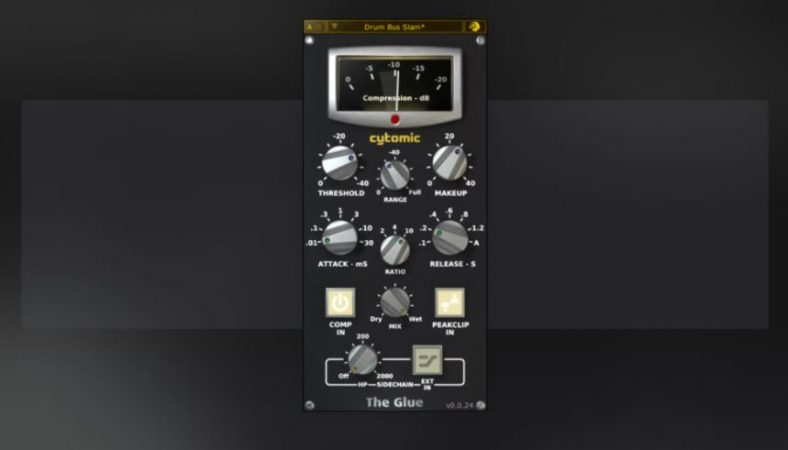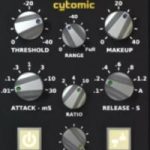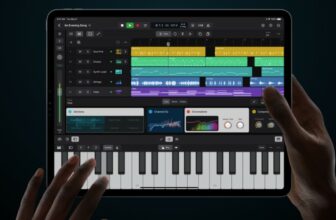The Glue by Cytomic Review

The Glue by Cytomic
Pros
- Works well on buses as well as individual sources
- Extra features over hardware that it's emulated on make it more versatile
- Good looking and well-performing GUI
- Very snappy and light on computer resources
- Good for transparent gain reduction
Cons
- Doesn’t have as much distinctive coloring as original hardware
- No VST3 version (though it's currently in the works)
Cytomic’s The Glue compressor delivers exactly what its name suggests: gluing a multitude of sources into a coherent, balanced mix, while also being surprisingly useful on a variety of individual elements.
What is The Glue?
The Glue by Cytomic is an analog-modeled compressor plugin based on the ubiquitous SSL G series bus compressor found in their 4000 series console desks.
SSL compressor emulations are a dime a dozen in the audio sphere, but Cytomic’s iteration packs a polished punch and adds a few nifty features over the original hardware.
The Glue has somewhat of a reputation as a dark horse in the plugin world. It has received rave reviews from several big names in the audio industry, yet it hasn’t quite achieved the mainstream popularity that similar plugins from established competitors like Waves and UAD have.
In fact, I came to know of it when YouTube music personality Rick Beato recommended it in one of his videos.
So does it match up to its more famous rivals? Absolutely. What Cytomic might have lacked in marketing muscle, it more than makes up for in performance.
The Glue is a simple but powerful tool that looks good, runs fast, and sounds just right. In the time elapsed between my first use of it and me writing this review, The Glue has crept into my list of go-to plugins and finds its way in almost all of my sessions.
Interface
The Glue presents a pleasant, uncluttered GUI but packs a serious punch under the hood.
It’s not meant to replicate the exact look of SSL hardware, but its brushed metal highlights and bold knobs and numbers give it a vintage but sleek look. It has all the usual controls seen on a compressor plugin, but the bonus is that the entire interface is completely scalable to fit into your workspace without any elements getting hidden.
The UI sports a large VU-like meter up top which displays the gain reduction in real-time.
A small indicator lights up red to indicate clipping or yellow when its in-built peak limiter is engaged. Above it lie buttons to switch between A/B comparison setups and to select presets. Also present is a button to select oversampling and render rates, features which we will elaborate further later.
Large knobs are present for setting the ratio, attack and release times, range, bypass, and engaging the in-built peak limiter.
Adding to the original hardware, Cytomic has provided a wet/dry mix knob, along with a sidechain section with a high pass filter and an option to enable an external input for sidechain compression.
The UI looks great and is responsive. The metering is fast and accurate and helps gauge the amount and rate of compression being applied.
The extra functionalities are a welcome addition, and the overall scalability is an excellent thoughtful feature that aids ease of use in dense mixes.
Features
As previously mentioned, The Glue compressor is touted to be an accurate model of the legendary SSL G compressor, much coveted for its uncanny ability to bind mixes together with a tight low end and slightly forward midrange.
In a conscious decision, however, The Glue has been modeled as a ‘perfect VCA’ instead of emulating the non-linearity of the original hardware, that is, its functioning remains the same across any level of input applied to it.
This entails that The Glue provides clean, transparent compression without very obvious coloring of the sound, regardless of how hot the input signal is.
While analog emulated coloring is sometimes desirable, here The Glue becomes useful in situations where you want precise dynamic control without altering the sonic signature. In light of this, I find The Glue to be an excellent tool for taming inconsistent dynamics at the beginning of the processing chain.
True to the SSL console compressor, The Glue provides threshold and makeup gain controls, and compression ratios of 2, 4, and 10 (:1). It also includes the classic auto-release setting found on the original along with the fixed values ranging from 0.1 to 1.2 seconds.
Cytomic has added a few neat new features over the original, which in my opinion sets it apart from the more accuracy prioritizing emulations from competitors.
In addition to the usual attack time settings ranging from 0.1 to 30 ms, we get a super-fast 0.01 ms setting to squash transients for situations like a crushed parallel track or special effect.
A very handy feature present that I’m surprised more modern plugins don’t add, is a ‘Range’ knob that limits the maximum amount of compression that can be applied irrespective of settings.
This is a great tool to ensure that dynamics are restrained without getting overly squashed when things do need to get louder and pop out.
A Dry/Wet mix knob is also present to be able to control how much of the plugin’s processed output is blended with the unprocessed raw signal.
This can be leveraged to easily achieve ‘New York-style’ parallel compression, where a compressed signal is blended to taste with the uncompressed source to flesh out the sound and add some body. Automation also becomes easier with the built-in mix knob.
The Glue also features a single button-controlled fixed-parameter peak limiter, which when engaged prevents the signal from clipping, instead applying a soft knee limiter to truncate the peaks.
This can be used to crank up the signal to get some distortion and grit for an aggressive sound.
Finally, The Glue adds a sidechain section, which features a highpass filter, and an option to take an external signal as sidechain input.
The former is very useful when used on low-end heavy busses like a drum bus, or even a master bus, to prevent ‘pumping’ where the louder low end of a kick or a bass makes the entire signal compress more than required whenever the low-end hits.
The latter of course enables the usage of sidechain compression or ‘ducking’, where the source it is applied on is compressed according to the input of some other external track, e.g. a synth can be ‘ducked’ whenever the kick drum hits. An option to set oversampling is also available to eliminate aliasing and the subtle distortions it may generate.
While the added features render The Glue less of a ‘true emulation’ of the original SSL G compressor, I feel that this modern update adds to its versatility and lends itself to a variety of sources and effects.
One slight drawback is the absence of a VST3 version, which makes the sidechaining capabilities dependent on the host DAW.
However, this doesn’t prove to be a problem with most modern DAWs now with robust routing infrastructures. An ‘auto-fade’ function is also missing, but it’s also made up for by the ease of implementing fade-ins and outs in modern DAWs
Sound
The Glue is primarily modeled on and marketed as a bus compressor. This means that it should be good tying together several sources spread across the frequency spectrum cohesively.
In this sense, The Glue works exceptionally well on drum busses, SATB vocal sections, and of course full stereo mixdowns. On drums and master busses, I found that it controlled dynamics without killing the transients, and the low end came out tight and punchy.
With its added set of features, however, the Glue also excels on a variety of other sources. On vocals when compressed, fairly hard, the Glue brings out sparkle and smooths out jumps in dynamics without being harsh.
It adds sustain and depth to bass guitars without making them overly round or woofy. The presets are useful as starting points and the auto-release function makes it a breeze to ‘set and forget’ it on many sources.
Sonically overall, I find that the Glue is quite transparent and ‘clinical’.
This may not please those looking for a compressor with distinct mojo that colors the sound, but it lends itself very well for situations that demand dynamic control without altering the sound. I often find myself applying compression in multiple stages, with The Glue coming first to transparently tame some of the jumps in loudness, then hitting another compressor for some desirable coloration.
In its default mode with no oversampling, there may be some very slight smearing of transients and distortion (honestly negligible in most cases), but to remedy this, there is also an option to oversample the signal for greater transparency, at the cost of slightly more latency.
Overall, The Glue proves to be a great asset for surgical dynamic control on a wide variety of sources thanks to its expanded feature set, while of course excelling at its primary function as a cohesive bus compressor.
Performance
Cytomic claims to use ‘the same high-quality algorithms used in circuit simulators but optimized to run fast’ in all their analog-modeled plugins including The Glue. Extensive usage over multiple sessions proves this claim to be true, as The Glue is the lightest amongst all the SSL emulation plugins I’ve used.
It loads up fast, works snappily, and has never hung up or glitched out on me so far. There have been situations where there are a dozen or more instances of The Glue running in real-time while also recording, and it has never seemed to make my system run sluggishly or cause perceptible latency.
Competing plugins from Waves and UAD both felt heavier in comparison when used in an already dense mix.
Enabling oversampling in the plugin understandably introduces some slight latency, but I’ve found the sound quality of the zero latency mode more than good enough virtually all the time.
The Glue is thus excellent to use as a lightweight beginning-of-the-chain compressor for a large number of tracks simultaneously, while also holding its weight as a great finalizing compressor in a mastering chain.
Conclusion
It’s hard to fault Cytomic’s The Glue on what it sets out to do. Keeping all the factors in mind that I’ve mentioned in this article, I definitely suggest getting the Glue as a one-time investment that would pay off continuously for a long time.
While not the most authentic-sounding SSL 4000G emulation out there, it remains an excellent and versatile compressor that would make a great addition to any producer’s toolkit.






